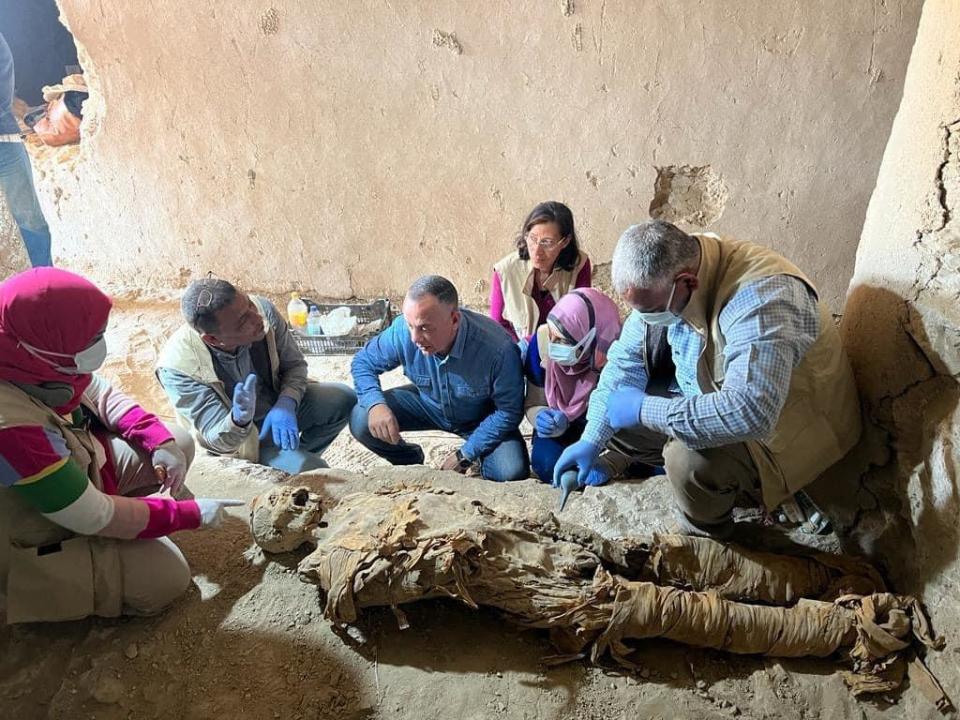Egyptian archaeologists tout rare discoveries unearthed in Luxor

Cairo — Egyptian archaeologists announced Wednesday the discovery of the first burial site in the city of Luxor that dates back to the ancient Egyptian 13th Dynasty. That means the sarcophagi, remains and artifacts found at the site, in Luxor's Dra' Abu el-Naga' Necropolis, date back almost 4,000 years, to sometime between 1803 BC and 1649 BC.
"We have discovered more than a thousand burial sites before in Luxor, but this is the first time we find one from the 13th Dynasty," Dr. Fathy Yaseen, Director General of Antiquities of Upper Egypt, told CBS News about the site, which is more than 50 yards wide and 70 yards long.
4,200-year-old queen's identity among remarkable new finds in Egypt
Among the discoveries in the burial site was a complete sarcophagus made of pink granite, weighing about 11 tons, inscribed with the name of a minister named Ankho, who lived during the reign of King Sobekhotep II during the 13th Dynasty.
There were also some "Ushabtis," small statuettes, made of wood and painted white to imitate limestone, that stuck out to the experts.

"I've been working in this field for more than 25 years now, and this is the first time I see Ushabtis with scriptures written in Hieratic instead of Hieroglyphs," Yaseen told CBS News. Hieratic was the common written form of ancient Egyptian between the third millennium BC and the mid-first millennium BC.
A "complete city" unearthed
Archaeologists also announced this week that they had unearthed a "complete city" dating back to the Roman era in eastern Luxor.
The Egyptian Archaeological Mission said Tuesday that the city is located near the Luxor Temple.
It was described in a statement by the Ministry of Tourism and Antiquities as "the oldest and most important" residential city on the eastern bank of Luxor. It is believed to be an extension of the city of Thebes.
الكشف عن أول مدينة سكنية كاملة بشرق الأقصر .
The discovery of the first complete residential city in eastern Luxor.#Egypte #Tweets #Luxor #tourism #Archaeology #heritage #StayTuned #explore #مصر pic.twitter.com/gzldbWtcPM— Dr Mostafa waziry (@mostafa_waziri) January 24, 2023
"It is important because it shows us more about the life of regular Egyptians at this time," Yaseen told CBS News, adding that scientists had "unearthed only the northern part of the city so far."
The discovery includes some residential buildings, workshops and two pigeon towers, used to house pigeons or doves, dating back to the second and third centuries, the statement said.
Texas couple feels "blessed to be alive'" after diving into ditch during tornado

 money
money 